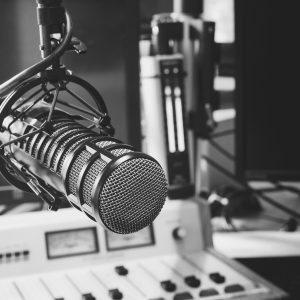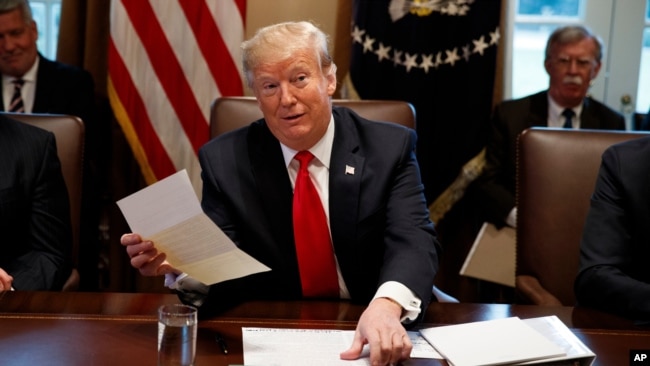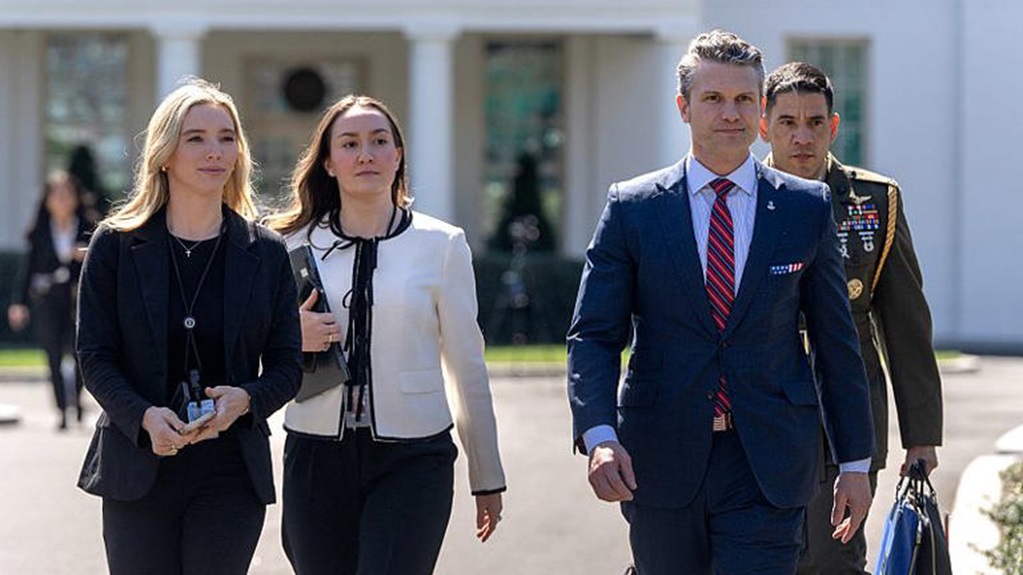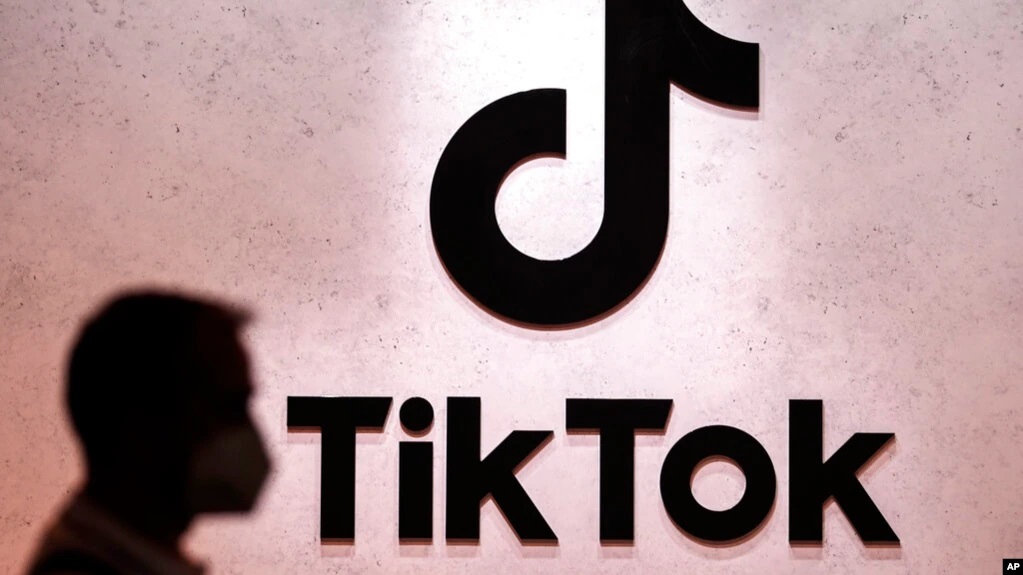Even With Trump, Kim Jong Un May Spurn Talks, Analysts Warn
Written by worldOneFm on February 13, 2024
Six months after the collapse of their 2019 summit in Hanoi, North Korean leader Kim Jong Un sent a letter to then U.S. President Donald Trump conveying a sense of personal betrayal.
“I am clearly offended, and I do not want to hide this feeling from you,” Kim told Trump in the last of 25 personal letters exchanged between the two men and shared with veteran U.S. journalist Bob Woodward.
In Hanoi, Trump had rejected Kim’s offer to dismantle a major nuclear facility in exchange for lifting most U.S. sanctions. Over the subsequent months, the talks reached a standstill, as each side backed away from the commitments made at their initial 2018 meeting in Singapore.
In the letter, Kim expressed disappointment that the United States and South Korea were ramping up joint military exercises that had been scaled back as part of the talks.
“If you do not think of our relationship as a steppingstone that only benefits you, then you would not make me look like an idiot that will only give without getting anything in return,” wrote Kim.
Months after he sent the letter, Kim unveiled a major foreign policy shift to cope with what he called Washington’s “hostile policy.” The new approach, Kim declared, would emphasize self-reliance and a strengthened nuclear deterrent.
Since then, North Korea has developed an arsenal of weapons that can fly further, faster, and more stealthily than ever. North Korea has enshrined nuclear weapons in its constitution – a status Kim called “irreversible.” Kim has also rejected offers of talks with the United States, instead expanding ties with traditional friends Russia and China.
To many observers, the moves suggest Kim has given up on his country’s long-term goal of normalizing relations with the United States – a development that may make it harder to convince North Korea to restart talks, even if Trump, the current Republican presidential frontrunner, were to return to the presidency in 2025.
“It will be a very different ballgame,” said Moon Chung-in, a foreign policy advisor to successive left-leaning South Korean administrations, including the previous government, which pursued talks with Pyongyang. “It could be extremely difficult to restart dialogue with Pyongyang.”
Trump still optimistic
No one knows how Trump would handle North Korea during a hypothetical second term, especially given the extreme contrasts he displayed toward the North during his first term.
In 2017, Trump threatened to “totally destroy” North Korea and exchanged threats of nuclear war with Kim, before pivoting to diplomacy and claiming that he and the North Korean leader “fell in love.”
Since leaving office, Trump has continued to speak positively of his relationship with Kim and frequently claims that the friendship prevented nuclear war – an indication that he sees the talks as beneficial, even if they did not result in North Korea giving up its nuclear weapons.
In December, Politico, a U.S. news website, reported that Trump was considering a plan that would at least temporarily abandon the goal of North Korea’s denuclearization. According to Politico, Trump would offer Pyongyang financial incentives to stop making new bombs. Trump denied the report.
“The only thing accurate in the story is that I do get along well with Kim Jong Un,” Trump said in a social media post.
It is not clear if the two men still exchange letters, or how much Trump would prioritize any outreach to Kim if he returned to office.
Kim: happy with status quo?
If Trump wants to resume talks, Kim may not feel inclined to abandon his current approach, which has allowed him to navigate a series of formidable challenges.
Despite a prolonged period of pandemic self-isolation, continued international sanctions, and a diplomatic stalemate with the United States, Kim has survived economically and even made progress in weapons development, notes Rachel Minyoung Lee, an analyst with the Vienna-based Open Nuclear Network.
These successes “likely reinforced the thinking in Pyongyang that there actually may not be much the U.S. can do for North Korea,” Lee said.
“Kim’s biggest takeaway from the collapse of the Hanoi summit is that the U.S. will always carry out what it calls a ‘hostile policy’ toward North Korea, irrespective of who is the president,” she added.
Instead, Kim has expanded his partnership with Russia. According to the United States and its allies, North Korea has provided Russia with artillery shells and ballistic missiles, which Moscow has used during its war on Ukraine. In return, U.S. officials suspect Russia is assisting North Korea’s nuclear and ballistic missile programs.
Warming North Korea-Russia ties make it even less likely that Kim will feel the need to find other avenues for diplomatic, military, and economic support, said Sydney Seiler, who until last year was the national intelligence officer for North Korea in the U.S. National Intelligence Council.
“He’s created an environment and a way forward that is less dependent on what one might call normal diplomatic relations or normal interactions with the outside, except for the few countries that would accept North Korea as it is,” Seiler told VOA.
Challenges ahead
While Kim could always change his mind and re-engage with the United States, he may demand much more in negotiations following several years of nuclear and missile advancements.
“But that likely will occur only if the U.S. is willing to shelve denuclearization and engage in some form of arms control or even risk reduction talks. And that is a very, very high threshold to meet, as the U.S., South Korea’s and Japan’s official position remains the complete denuclearization of the Korean Peninsula,” Lee said.
If Trump were to pursue such an accommodation with Kim, it could raise tensions with South Korea. Unlike the situation during Trump’s first term, South Korea’s current president, Yoon Suk Yeol, is conservative and prefers a hawkish approach to the North.
Jessica Taylor, an Asia security expert at the Atlantic Council, fears Trump would continue to downplay North Korea’s launch of short-range missiles, which pose a major threat to U.S. regional allies.
Trump also may be willing to cancel joint military exercises with South Korea, “not only to appease North Korea but just because he doesn’t see them as necessary or worth the expenditure,” Taylor said.
In the end, Taylor thinks Trump’s North Korea policy will likely look much like it did the first time – lots of “bluster and showmanship…without getting into anything really concrete.”
By William Gallo – VOA








